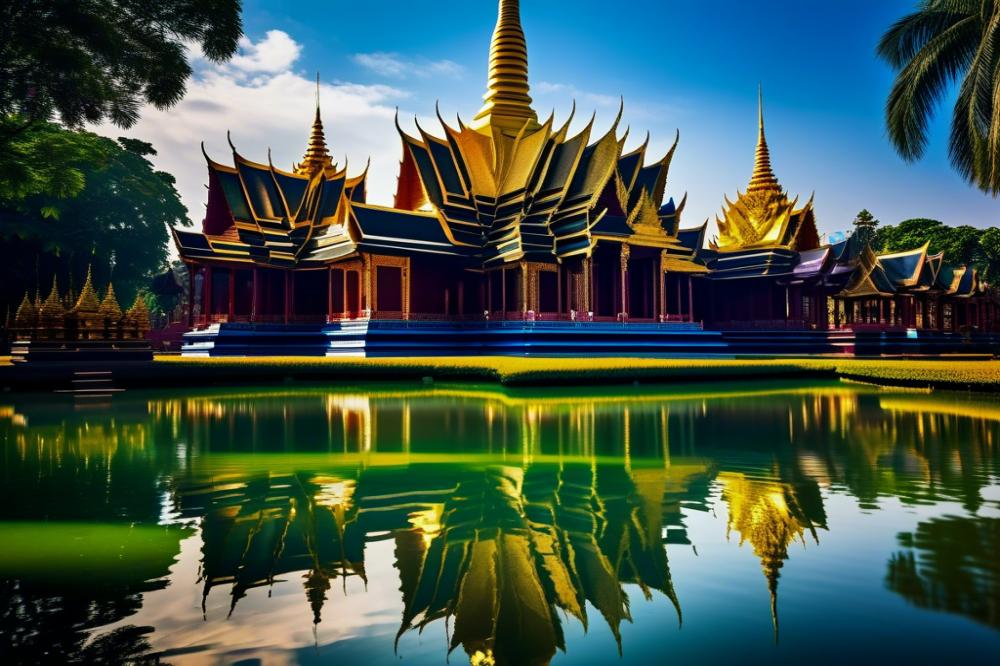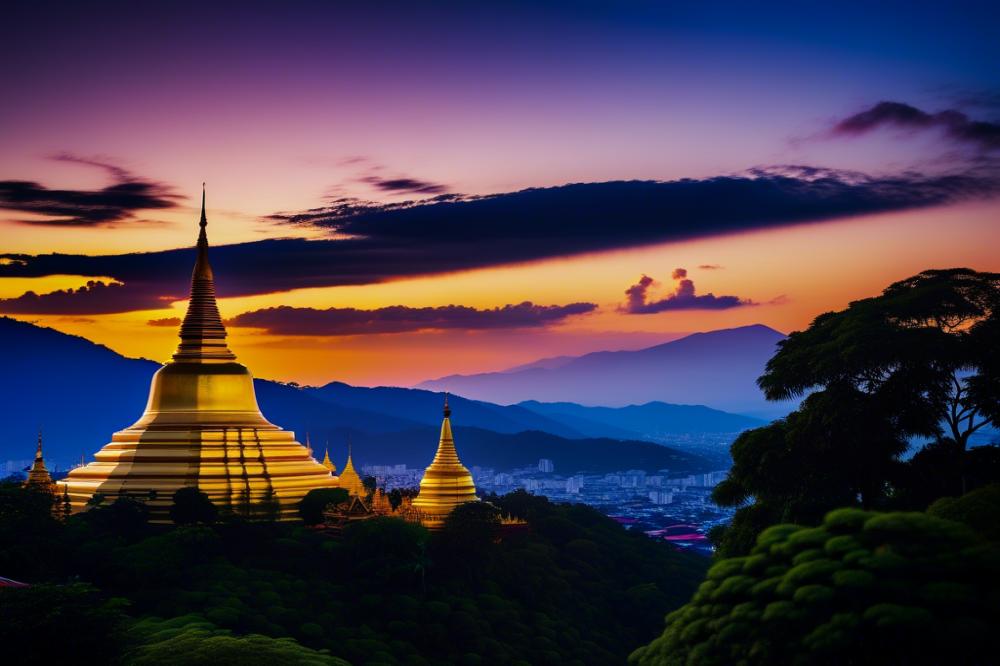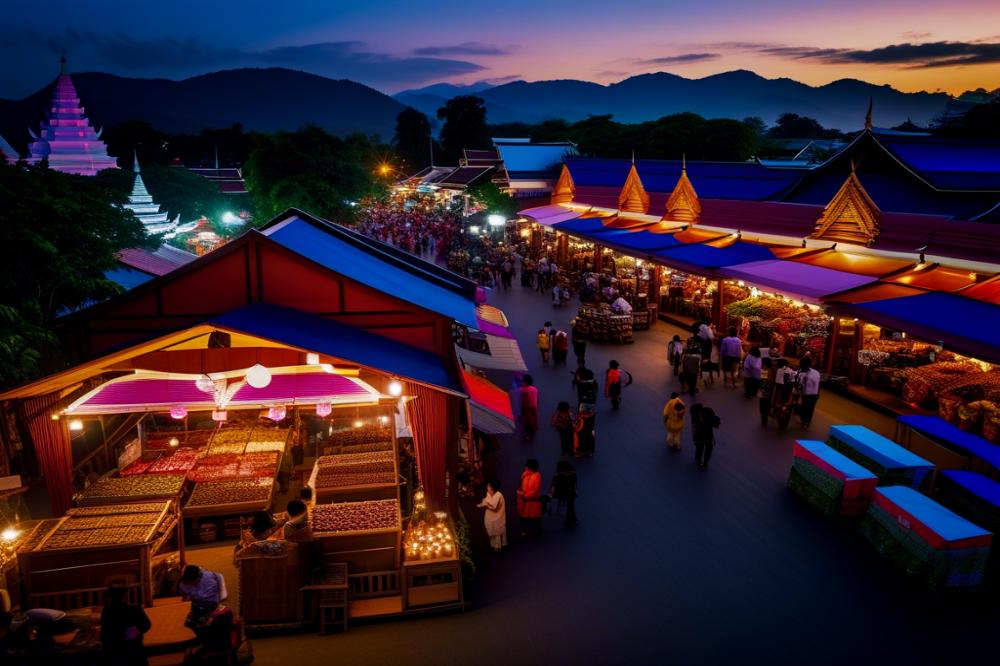Visiting the Silver Pagoda in Phnom Penh
Exploring Phnom Penh, visitors come across a remarkable gem—the Silver Pagoda. Situated within the grounds of the Royal Palace, this temple serves as a symbol of Cambodia’s rich culture and history. Known for its stunning architecture, it is a must-see for anyone interested in Buddhist traditions. As you approach the pagoda, intricate designs and shimmering rooftops greet you, offering a glimpse into the country’s artistic heritage.
This landmark holds a special place in the hearts of Cambodians. It is not merely a tourist attraction; rather, it reflects the spiritual essence of the nation. Every corner of the Silver Pagoda tells a story, connecting the past with the present. Visitors often find themselves captivated by the sacred atmosphere and the polite silence that surrounds the temple.
Sightseeing in Cambodia would be incomplete without a visit to this extraordinary site. travelers can witness the exquisite collection of artifacts inside, including gold and diamond Buddha statues. Each piece reveals the dedication of artisans who have preserved this cultural treasure. The pagoda’s opulent architecture is enhanced by its serene surroundings, creating a peaceful retreat from the bustling city life.
For those venturing into the heart of Phnom Penh, the Silver Pagoda offers a unique blend of spirituality and artistry. Engaging with this historical site allows guests to appreciate the deep-rooted customs of Cambodian life. As tourism continues to grow, this landmark remains a beacon, inviting all to experience its profound beauty and significance.
The Silver Pagoda: A Brief Overview
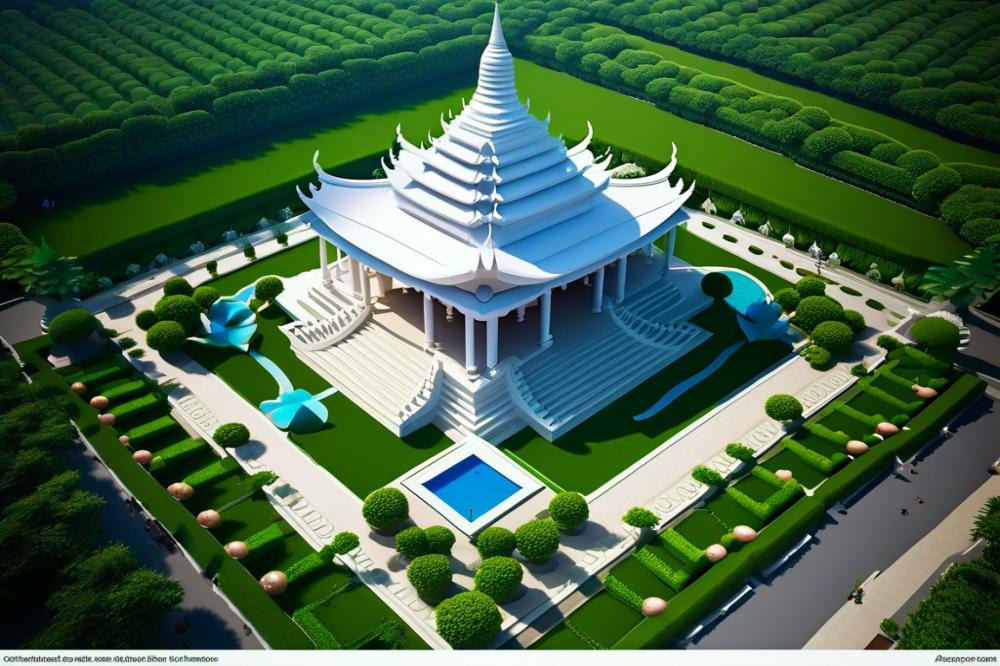
Located in the heart of Phnom Penh, the Silver Pagoda is one of Cambodia’s most important landmarks. This illustrious temple, known for its stunning architecture, serves as a symbol of the country’s rich Buddhist heritage. Built in the mid-19th century, it has a history that reflects the resilience and spirituality of the Cambodian people.
The pagoda is found within the Royal Palace compound, making it easily accessible for visitors. It houses numerous relics and artifacts that are vital to Cambodian spirituality. These include a life-sized gold Buddha encrusted with diamonds. This impressive statue highlights the significance of Buddha’s teachings and the deep devotion of the locals.
Visitors will notice the impressive combination of Khmer architectural styles. Ornate roofs and intricate carvings adorn the structures, showcasing the artistry of Cambodian craftsmen. Each feature tells a story about the culture and traditions that shape the nation today. The temple’s layout is designed to inspire peace and reflection, inviting tourists and pilgrims alike to immerse themselves in its serene atmosphere.
As a functional Buddhist temple, the pagoda plays a crucial role in the religious life of Cambodia. It regularly hosts ceremonies and events, bringing the community together in shared faith. The impact on spirituality is profound, as many Cambodians regard it as a sacred space where they can connect with their heritage.
For those involved in tourism, the Silver Pagoda stands out as a key sightseeing destination. Its beautiful surroundings and historical significance attract travelers from around the world. A visit offers an opportunity to learn about Cambodia’s past, while also appreciating the ongoing influence of Buddhism in the daily lives of its citizens.
Exploring the Architectural Wonders
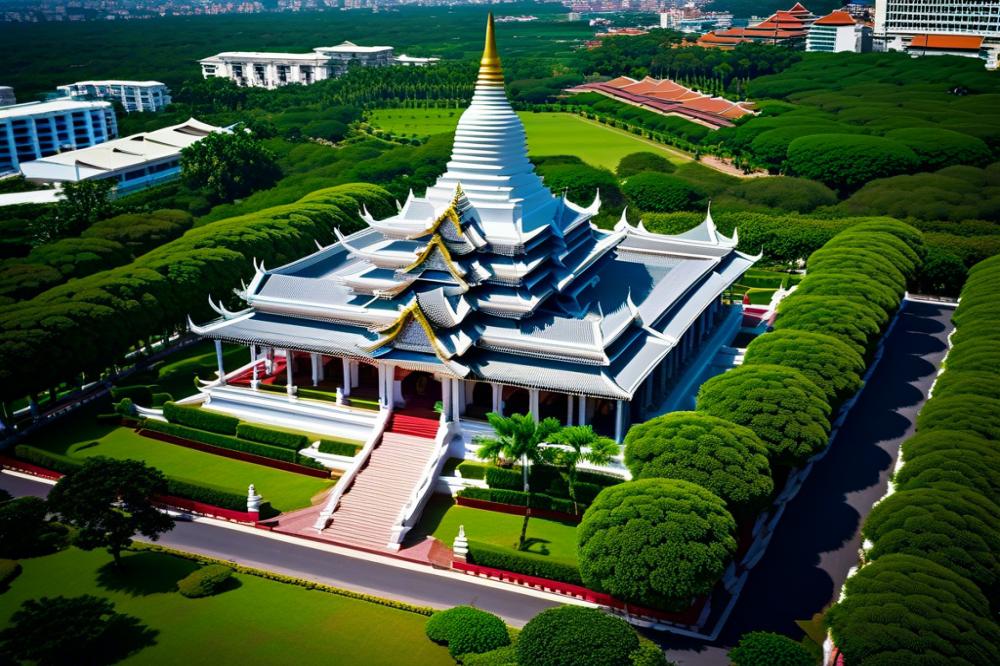
The Silver Pagoda, located in the heart of Phnom Penh, is a stunning example of Cambodian architecture. This temple features exquisite design elements, showcasing the rich history and culture of the region. Visitors are often captivated by the intricate decorations that adorn the walls and ceilings. Among them are delicate carvings that highlight the skill of local artisans.
Within its walls, the interior tells a story of spirituality. Visitors can marvel at the breathtaking golden Buddha statues that are both striking and reverent. These figures capture the essence of Buddhist beliefs and serve as focal points in the temple’s serene atmosphere. The use of gold leaf adds a touch of brilliance, drawing the eyes of everyone who steps inside.
The exterior of the pagoda presents a harmonious blend of traditional Khmer style and colonial influences. Its tiered roofs rise gracefully, with ornate finials that glisten under the sun. Clearly, the structure reflects centuries of devotion and craftsmanship. This reflects the significance of religion in Cambodian society and its influence on architectural practices.
As you explore the surrounding grounds, take note of the various shrines and stupas. Each bears its own artistic detail, contributing to the overall aesthetic of the temple complex. Sightseeing here allows for a deeper understanding of both Cambodian heritage and Buddhist traditions. The atmosphere is peaceful, making it a favorite spot for tourists and locals alike.
In summary, visiting this landmark is more than just a travel experience; it is a journey through Cambodian artistry. This architectural wonder resonates with the spirit of a nation, displaying a fusion of cultural values and religious beliefs. Every corner of the Silver Pagoda tells a story, inviting guests to connect with its historical and spiritual significance.
Historical Significance and Cultural Insights
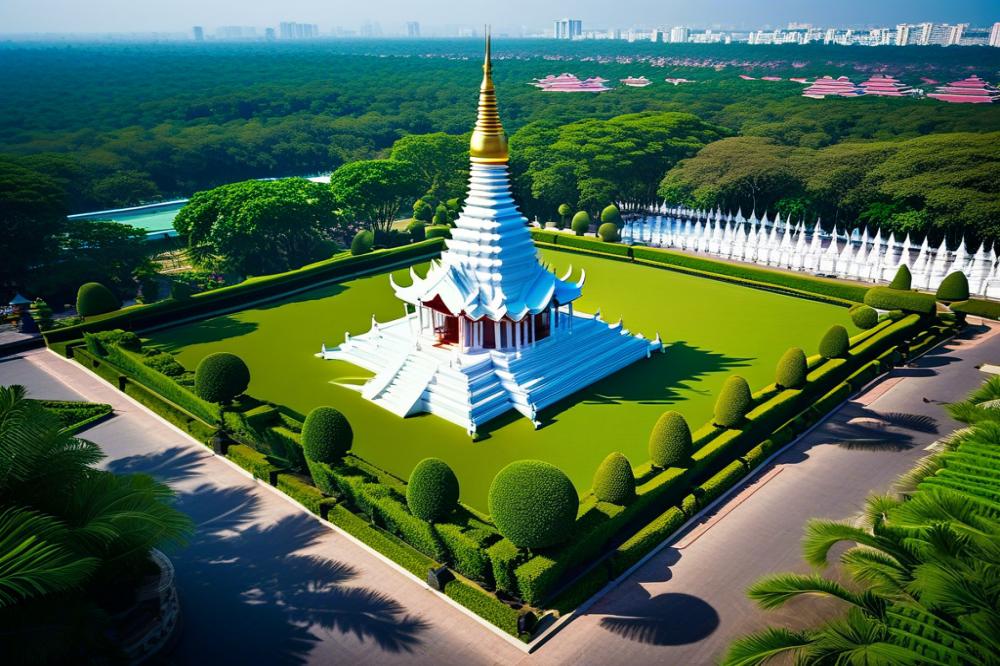
The Silver Pagoda, located in Phnom Penh, holds deep historical significance for Cambodia. Built in the mid-19th century, its construction was commissioned by King Norodom. This temple has witnessed many important events throughout Cambodian history. It also stands as a symbol of resilience and hope during times of turmoil.
More than just a religious site, the pagoda embodies Khmer culture. Its exquisite architecture displays traditional Khmer design, showcasing the craftsmanship of the era. Inside, visitors can find a vast collection of artifacts, including gold and silver Buddha statues. These items highlight the rich religious and artistic heritage of the nation.
During the Khmer Rouge regime, Cambodia experienced tremendous suffering. However, many artworks from this period were preserved in the pagoda. They now serve as reminders of the nation’s past. The temple actively participates in Cambodian tourism, drawing travelers keen to learn about the local history and culture.
When exploring the pagoda, one can appreciate its role as a museum. This vital center preserves not only religious relics but also various forms of art. Sightseers can admire paintings, statues, and ceremonial items that reveal the deep fabric of Cambodian life.
Visitors often marvel at the intricate details of the temple. The golden roof glistens under the sun, capturing the attention of anyone nearby. Each corner of the structure tells a story, representing the spiritual connection between the Cambodian people and their beliefs.
In summary, the Silver Pagoda encapsulates the rich tapestry of Cambodian history and culture. It remains a destination for those wishing to understand the significance of this unique landmark. A visit here offers a glimpse into the country’s soul, bringing the past to life.
Sightseeing Tips for Visitors
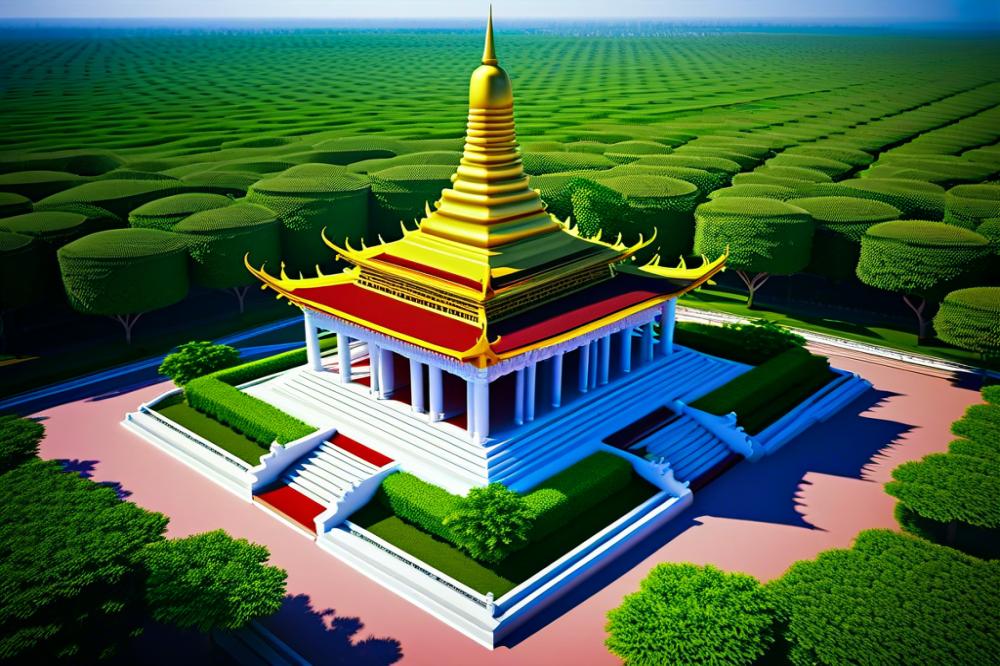
Planning a trip to the Silver Pagoda is an exciting adventure. Most visitors will appreciate knowing that it opens daily from 8:00 AM to 5:00 PM. Ensure you have ample time to soak in the temple’s beauty.
Entry fees are relatively inexpensive, costing about $10 for tourists. This fee contributes to the maintenance of this site, which plays a significant role in Cambodian culture and history. Keep your camera handy as stunning architectural details and golden statues abound.
The best time to visit is in the early morning or late afternoon. At these times, the temple sees fewer crowds, allowing for a more peaceful experience. Enjoy the tranquility as you stroll through the well-kept grounds and admire the impressive structures.
Nearby attractions enhance your visit. The Royal Palace is just a short walk away and complements the experience wonderfully. Travelers can explore its grandeur and learn about Cambodia’s monarchy.
Another landmark worth seeing is the National Museum of Cambodia. It showcases an extensive collection of artifacts that depict the nation’s rich history and Buddhist heritage. Visiting it can provide deeper context about the temple and its significance.
Allow yourself enough time for sightseeing. Phsar Thmei, or the Central Market, offers a taste of local life. Here, you can shop for souvenirs or sample some delicious Cambodian street food.
Travelers should dress appropriately when visiting temples. Respectful clothing is essential in these sacred spaces. Light, breathable attire is suitable for the warm climate, but ensure your shoulders and knees are covered.
Experiencing Buddhism in Cambodia
Buddhism is more than just a religion in Cambodia; it shapes the nation’s culture and identity. This spiritual practice influences daily life, rituals, and community gatherings. As visitors explore the stunning architecture of the Silver Pagoda, they can see how deeply intertwined Buddhism is with the essence of Cambodian society.
Everywhere in the country, temples serve as both places of worship and community hubs. Locals often gather to celebrate festivals or participate in ceremonies. Tourists have the opportunity to witness these events firsthand. Understanding the significance of these moments can provide deeper insights into the culture and history of Cambodia.
Visitors can respectfully engage with Buddhism during their sightseeing adventures. Participating in meditation sessions, for example, can offer a unique experience. Observing rituals, such as the daily offerings made by monks, allows travelers to witness devotion and faith in action. These activities provide a window into the spiritual life of the Cambodian people.
The majestic temple also stands as a symbol of resilience. Despite the challenges faced throughout history, its preservation reflects the dedication to maintain cultural heritage. Respecting this commitment is crucial for anyone wishing to understand the local way of life.
Traveling in Cambodia opens doors to the rich tapestry of its traditions. Engaging with monks or attending a sermon can provide enlightening perspectives. Many who have participated in these practices speak highly of the connection they feel with the land and its people.
For tourists, interacting with the world’s beliefs can be rewarding. Taking a moment to embrace the tranquility within the temple grounds can be both calming and enriching. Those who prioritize cultural sensitivity often find that their experiences are more memorable and meaningful.
Exploring the history of Buddhism here leads to a greater appreciation of the nation itself. Not only are there stunning landmarks to admire, but there are also lessons to learn. Engaging with the spiritual vibrancy of Cambodia can leave a lasting impact on every visitor.
Final Thoughts
A visit to the Silver Pagoda offers a glimpse into Cambodia’s rich history and culture. This sacred site stands as a testament to the country’s heritage, showcasing stunning architecture and artistic treasures. Visitors can appreciate not only the beauty of the pagoda but also the stories behind each artifact.
Tourism plays a vital role in supporting the preservation of such sites. Engaging with the Silver Pagoda enriches the travel experience, allowing individuals to connect with Cambodian traditions and spirituality. The serene atmosphere invites reflection and appreciation for the resilience of the Cambodian people throughout their history.
Traveling to Phnom Penh provides a unique opportunity to explore this remarkable site. Whether you are an avid traveler or a first-time visitor, the Silver Pagoda is a must-see. As you plan your holiday adventures in Cambodia, make sure to include this iconic landmark on your list. Embrace the chance to experience its beauty and significance firsthand.

